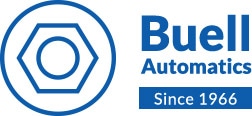Since 1966, Buell Automatics has been designing and manufacturing small precision products for a wide range of industries and applications. Our over 50 Davenport multi-spindle screw machines, in particular, offer unique versatility thanks to their distinctive features designed and developed by our team.
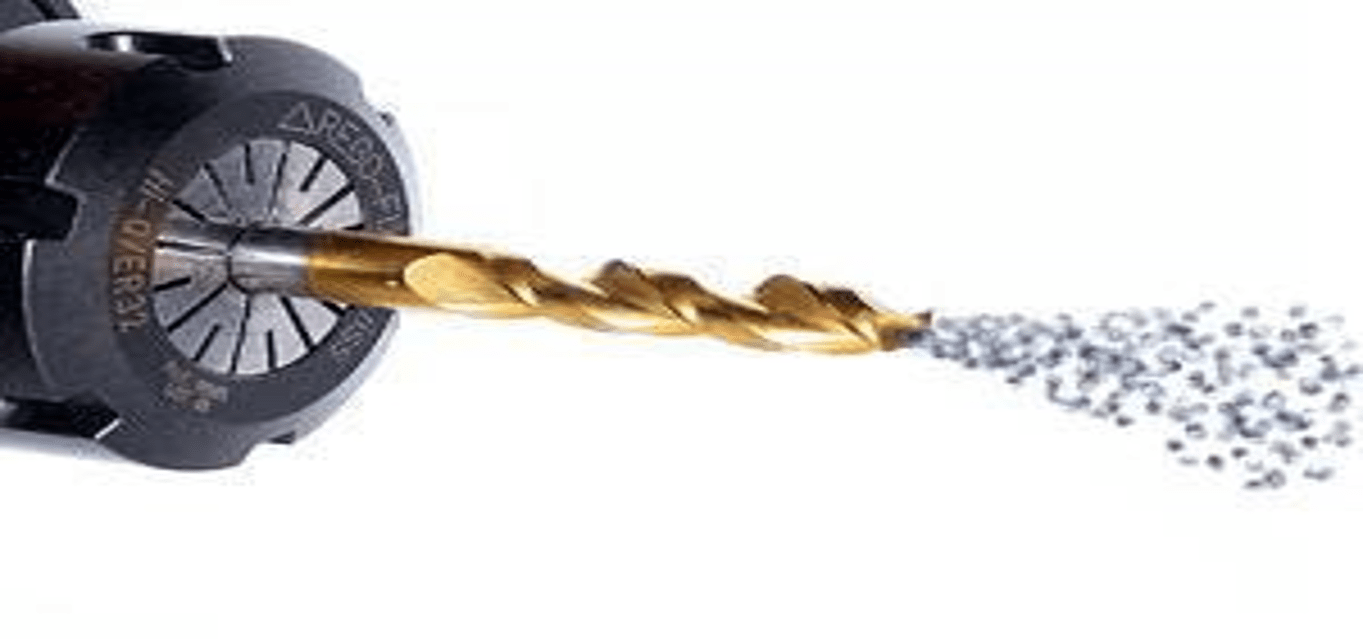
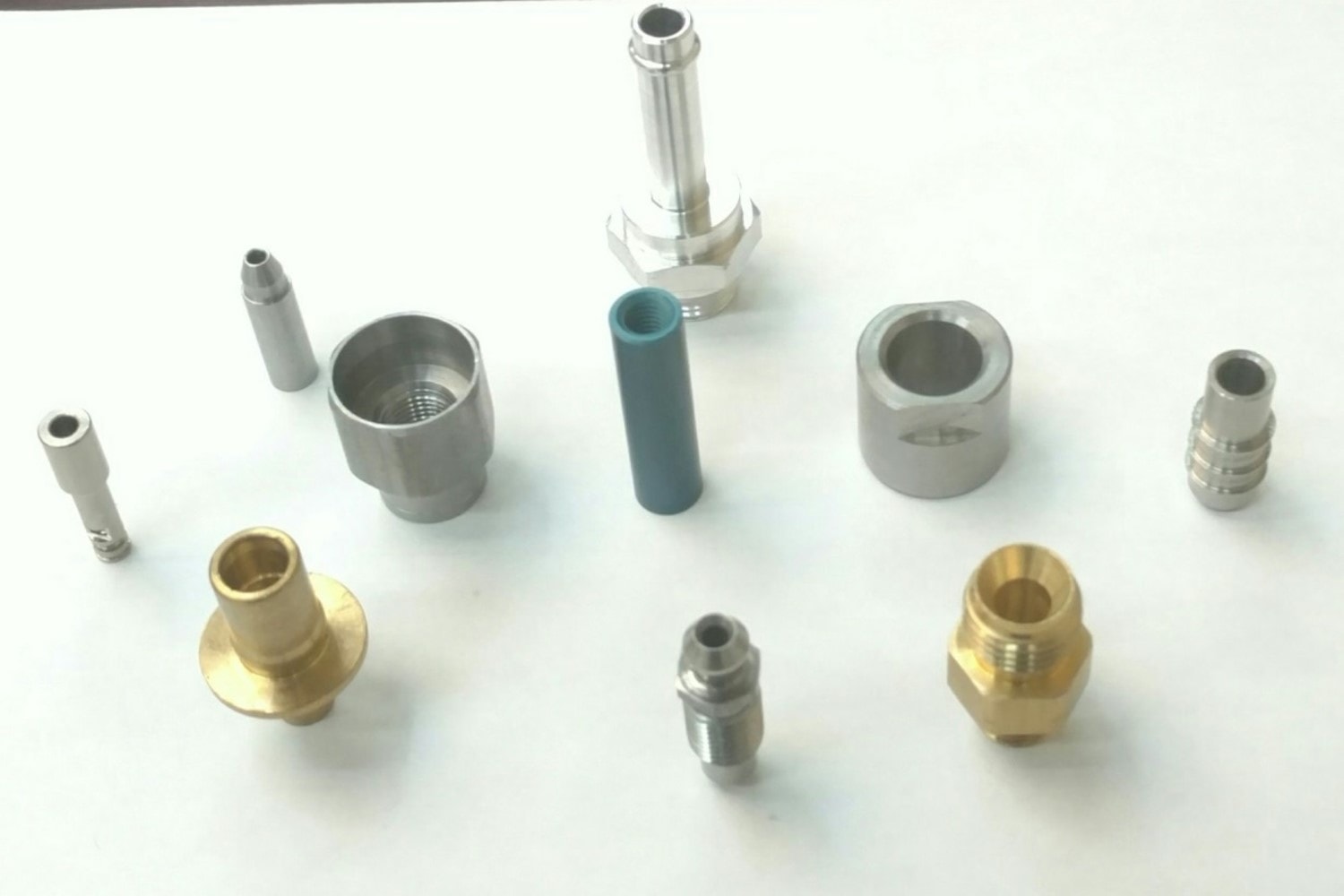
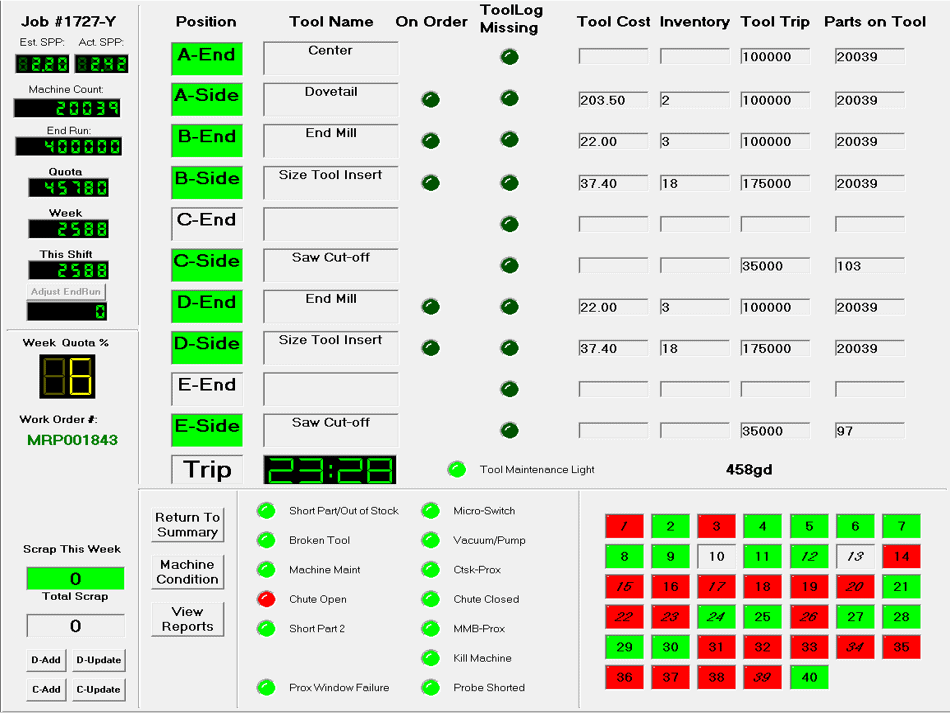
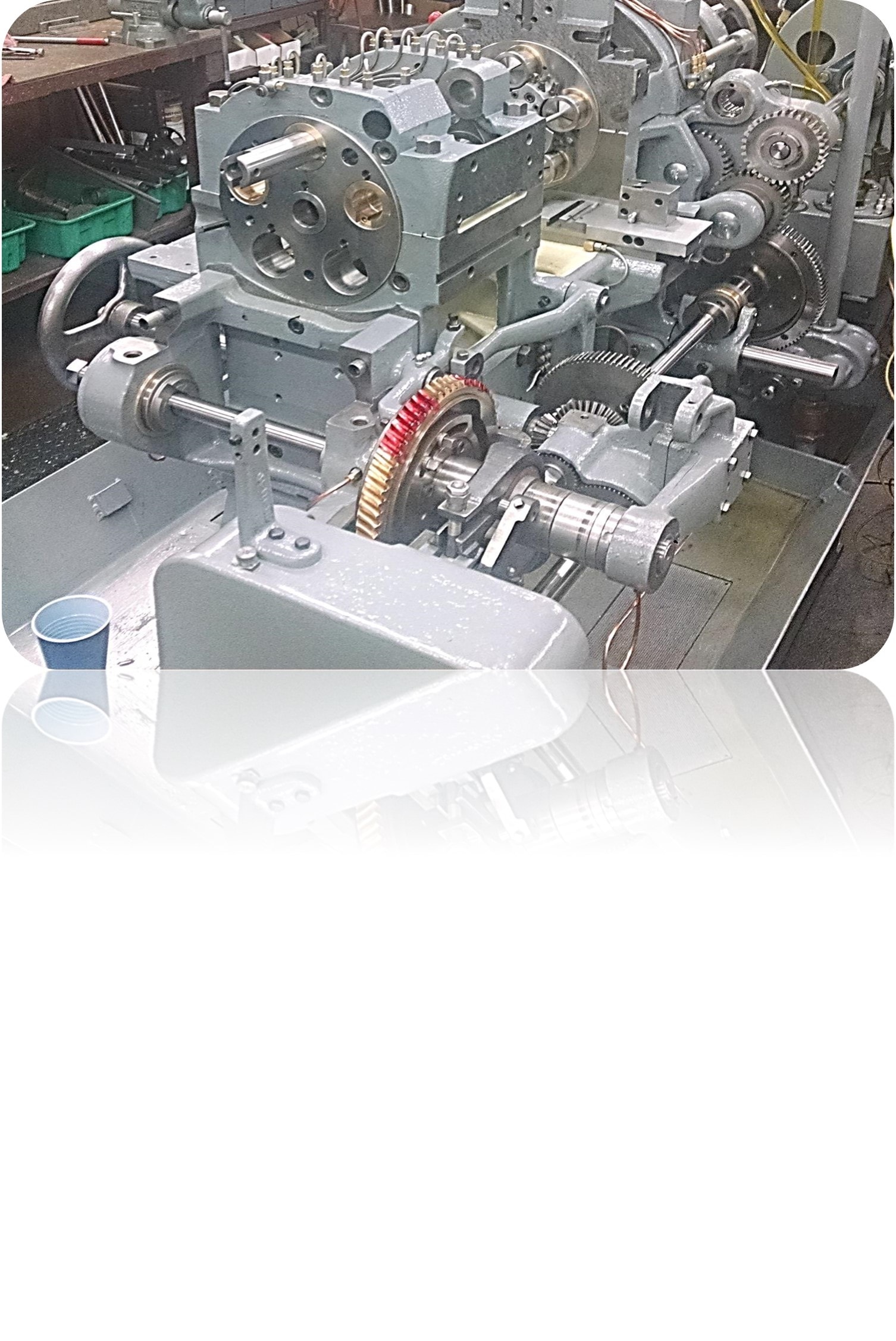
How Davenport Screw Machines Work
Gaining a broader understanding of multi-spindle screw machines involves understanding the common components within the machines, the different types of available machines, and the applications they are used for.
Parts of the Multi-spindle Screw Machine
Multi-spindle screw machines are specially engineered to simultaneously cut material in succession until a finished part is achieved. These machines are outfitted with multiple spindles which rest on horizontally oriented machine heads. Five rotations of the head completes all operations and results in a finished a part.
Multi-spindle screw machines have three (3) primary components:
- Multi-Spindle Front Head
The front rotating head is mounted in the machine casting to support the head and allowing free rotation as the head indexes through each position. Within the head there are rotating spindles, which are gear-driven and mounted in bearings. These spindles support the bar stock as its fed from the stock reel into the revolving spindles where its introduced to the unique cutting tools in each position. There are equal number of side cutting and end cutting tools in each machine.
- Multi-Spindle Rear Head
Multi-spindle rear head is fixed and creates features from end working tools held in stationary or revolving spindles. The tools are introduced to the bar stock on the front head by cams. The rise of the cams determines the depth of cut into the work piece and is adjustable.
- Stock Reel
The stock reel holds and supports the raw bars as they are fed, by the feeders into and through the front head to be machined. The stock reel rotates with the front head through each position until a finished part is produced. Once completed, a new part is fed out to approx.. the same length as the previous and the process is repeated. Multi-spindle screw machines are ideal for mass production because they can produce parts at a rate 4-6 times higher than single-spindle machines and greater accuracy than cold heading.
Varieties of Multi-Spindle Screw Machines
Over the past several decades, numerous attachments and tools have been designed that expand the capabilities of multi-screw spindle machines. Manufacturers now have access to a wealth of options when it comes to how they run their machinery and what it’s used for.
Variances from machine to machine may include:
- Automatic vs. conventional lathes (automatic lathes feature quicker cycle times)
- Cam driven vs. CNC
- Single (lower quantities) vs. multi-spindle (higher quantities)
Precision Machining Process
Davenport screw machines function intuitively. The use of a Davenport Multi-Spindle Screw Machine will come relatively easily to anyone with general machining experience.
- Work spindles use feeders to feed bar stock through the head supported by the stock reel.
- Bars are fed inside the tooling area.
- Work is performed in each tool position as a subtractive process
- Each station is responsible for a different operation
- The spindles then rotate from one tool to the next in order to complete the part
Advantages of Davenport Screw Machining
Davenport screw machining offers numerous benefits to manufacturers and other industry professionals. Turnaround, speed and cost efficiency are often factors that heavily influence purchasing decisions for multi-spindle screw machines. Most shops average a lead time of roughly 4-12 weeks for a typical project, which is notably shorter than comparable methods of production.
The nature of Davenport machinery translates to high-volume capabilities and consistent results. Most machines today are monitored by computer interfaces to ensure accuracy and repeatability throughout the course of projects.
The ability to manufacture at high volumes, along with the lack of a need for secondary operations, translates to reduced costs for clients. In addition, quality control is ensured with Davenport machinery, there’s also no need to worry about costly or time-consuming returns processes and quality checks. This fast turn around time helped when manufacturing fuel line fittings and connectors for the automotive industry.
Case Study – High Volume Threaded Insert Connectors
At Buell, we’re experts at coming up with solutions to complex problems.
Here’s an example of how we used our screw machines to conceptualize and manufacture a complex threaded insert for one of America’s most popular trucks.
Gallery
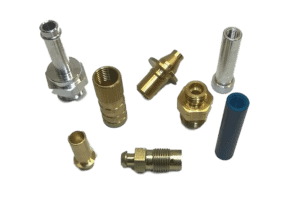
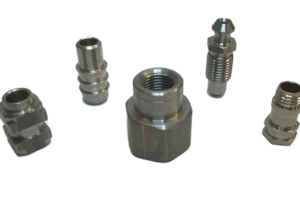
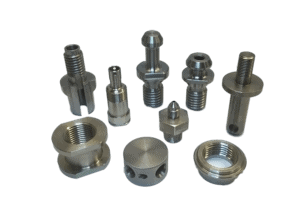
Screw Machining Capabilities
Our precision screw machines can handle the following processes:
- Milling
- Deep-hole drilling
- Reaming
- Turning
- Threading (cut and formed)
- Thread rolling
- Recessing (Bokum)
- Knurling
- Cross drilling/tapping
- Broaching
Equipment and Material Capabilities
Our equipment inventory currently includes three Davenport Model B long-bed machines and over 50 standard-bed machines (oversized), which can machine parts with diameters of 3/32 inch (2.0 mm) to 1 inch (25.4 mm), at tolerances of +/-.0005 of an inch.
Common materials worked include aluminum, brass, bronze, copper, tubing, steel, and stainless steel.
Applications
Using Davenport screw machines, we manufacture parts for a huge range of industries, including automotive, defense, medical, consumer, electrical, pneumatic, electronic, communications, firearms, injection molding, marine, commercial, HVAC, hydraulics, military, and many more.
No matter what sort of component is being created, the products fabricated through the use of multi-spindle screw machines are regularly used for:
- Bushings
- Fittings
- Connectors
- Fasteners
- Inserts
- Compression Limiters
- Armatures
- Solenoids
Learn More
Dedicated to optimal quality and safety, Buell proudly meets key industry standards, including registration to IATF 16949 standard, ITAR (International Traffic In Arms) standard, and ISO 14001 Environmental compliance.
For more than 50 years, we’ve been helping customers bring their metal-component designs to life and assisting them every step of the way. From prototype to PPAP; low to high volume. Buell is here to support your needs.
For us, no project is too small! To get started on your next manufacturing project or to learn more about our services, get in touch with the team today.

